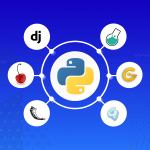Image Source: pixabay.com
Introduction:
In the fast-paced world of technology, businesses often face challenges when it comes to acquiring and retaining skilled IT professionals. This has led to the emergence of various strategies, one of which is “body leasing.” This article aims to shed light on the concept of body leasing, its relevance in the IT industry, and its connection with Django web apps. Additionally, we will touch upon best practices for software documentation to enhance project efficiency and collaboration.
Body Leasing: An Overview
Body leasing, also known as staff augmentation or outsourcing, is a practice where organizations hire external talent to augment their in-house teams temporarily. This strategy allows businesses to bridge the skills gap, access specialized expertise, and manage fluctuations in project demands more effectively. Body leasing offers flexibility and cost-efficiency, making it an attractive option for companies in need of skilled professionals without the long-term commitment.
The Role of Body Leasing in the IT Industry
In the IT industry, body leasing plays a significant role in addressing talent shortages and meeting project deadlines. Companies leveraging body leasing can quickly scale their development teams to accommodate specific project requirements. This becomes particularly relevant when working with technologies like Django web apps, a popular framework for building scalable and robust web applications.
Django Web Apps and Body Leasing
Django, a high-level Python web framework, empowers developers to build complex web applications efficiently. Integrating Django web apps with body leasing can offer several advantages. Firstly, organizations can tap into a pool of skilled Django developers, ensuring a smooth development process and faster time-to-market. Secondly, body leasing allows companies to access expertise in different aspects of Django development, such as front-end design, back-end logic, and database integration. This versatility enables the development of comprehensive and feature-rich web applications.
Software Documentation Best Practices
While body leasing and Django web apps contribute to successful project execution, effective software documentation practices are crucial for maintaining consistency, facilitating collaboration, and ensuring knowledge transfer. Here are a few best practices to consider:
Clear and Comprehensive: Documenting software requirements, architecture, and code should be clear, concise, and comprehensive. Use appropriate diagrams, flowcharts, and examples to enhance understanding.
Standardized Formats: Define and adhere to standardized documentation formats, making it easier for all stakeholders to access and understand the information.
Version Control: Implement version control systems, such as Git, to track changes in documentation and maintain a historical record of updates.
Collaboration Tools: Utilize collaboration tools like wikis or cloud-based platforms to encourage team collaboration, provide real-time access, and facilitate knowledge sharing.
Regular Updates: Keep documentation up-to-date with any changes in project requirements, architecture, or codebase. Regularly review and revise the documentation to reflect the current state of the project.
Conclusion:
Body leasing has become a valuable solution in the IT industry, enabling organizations to access skilled professionals and complete projects more efficiently. When combined with technologies like Django web apps, body leasing offers flexibility and expertise, leading to the development of robust and scalable web applications. Moreover, practicing effective software documentation ensures project transparency, collaboration, and knowledge transfer. By following best practices, businesses can optimize the benefits of body leasing and streamline their development processes effectively.







